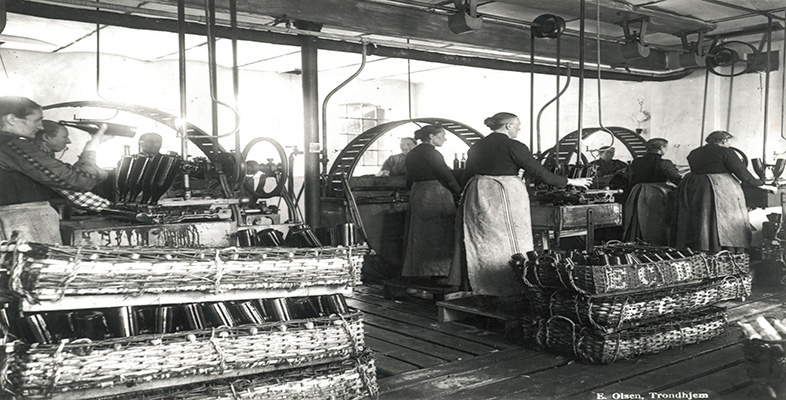Station 4: Nollendorfplatz
Click on the link below to view the U-Bahn map. You will find a hotspot for Nollendorfplatz. Click on the hotspot and watch the film that is in the pop-up window. When you have watched the film, click back on your browser to return to this page.
Nollendorfplatz [Tip: hold Ctrl and click a link to open it in a new tab. (Hide tip)]
Activity 5
- Make a list of the key features of urban leisure in 1920s Berlin.
- What theme links Frei’s commentary with Ruttman’s film?
Specimen answer
- Cinema; illuminated shop windows and flashing neon lights; cabaret-style entertainment (or variety theatre) including dancing girls, acrobatic tricks, music, and other circus acts; cocktail bars; night clubs with dancing, live bands and casino entertainments; sexual freedom (including homosexuality).
- Hedonism. This is first apparent in Frei’s description of the deliberate ignorance of street violence in favour of drinking and partying. Ruttman’s pleasure-seekers also seem oblivious to all but enjoyment – most obviously, the couple getting into the cab: the sexual frisson between the two is evident by the way the man places his hand on the woman’s arm, and both ignore the plight of the poor begging boy.
Discussion
Dance halls pushing popular music, nightclubs with resident jazz bands and cinemas could be found in cities across Europe in the 1920s, but it is worth noting that in Berlin transformations in popular culture seemed to be much more extreme than elsewhere, the result of a combination of political freedom (ie, the absence of censorship legislation) and a deep sense of instability. At the same time though, those extremes were often experienced by a small minority – elements of the intelligentsia, or even tourists to the city intent on seeking out pleasures for which Berlin had acquired a reputation. As the British diplomat Harold Nicholson later wrote, ‘it was not the Berliners themselves who most frequented these palaces of delight; it was the tourists and the businessmen from Dortmund or Breslau’. Yet the perception of cultural extremity can be just as important as the reality.
Activity 6
Read the Source 3.
- Can you identify the author of this article?
- What are the problems of modernity that concern the author?
Specimen answer
- The author is Joseph Goebbels. You might already be familiar with the name, and know him as the propaganda minister under the Nazi government from 1933. In 1926, Goebbels had become the Gauleiter (regional head) of the Nazi Party in Berlin-Brandenburg.
- For Goebbels, several features of modernity – cosmopolitanism, cultural openness and the rise of the political left – have led to great moral decay.
Activity 7
For now, I want to end this tour with a hint of what was to happen next, through a little case study of the famous erotic dancer of 1920s Berlin. Watch the following film:
Transcript: Berlin nightlife
[MUSIC]
[MUSIC]
[MUSIC]
[MUSIC]
